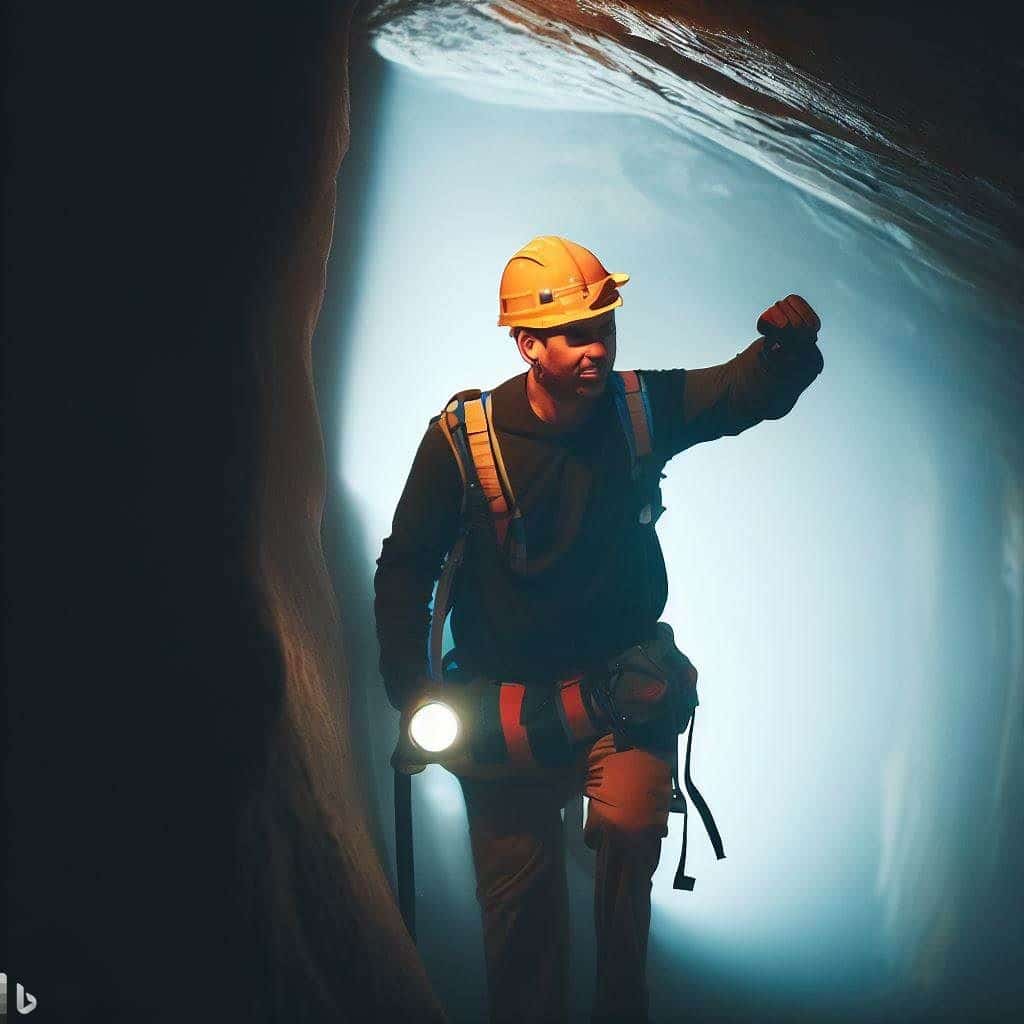Mastering Safety: The Ultimate Guide to Confined Space Management Training
Confined space management training is a crucial aspect of workplace safety, especially for those who work in industries where confined spaces are a common reality. These areas pose a significant risk to workers due to their limited access and potential hazards. Under proper training, employees can be better equipped to identify, assess, and mitigate these risks, ensuring a safer work environment.
The primary goal of confined space management training is to educate workers on the potential dangers they may face while working in confined spaces and to provide them with the necessary knowledge, skills, and abilities to perform their tasks safely. This includes understanding the nature of confined spaces, the hazards they present, and the appropriate actions to take in the event of an emergency.
In this comprehensive guide, we will explore the various aspects of confined space management training, including its importance, the identification of confined spaces and hazards, key training components, and how to choose the right provider for your needs. By the end of this article, you will have a thorough understanding of the critical role this training plays in ensuring the safety of workers in confined spaces.
Importance of Confined Space Management Training
Confined space management training is essential for several reasons. Firstly, it is a legal requirement in many jurisdictions that workers who enter or work in confined spaces receive appropriate training. This helps to ensure that they can perform their duties safely and know the potential hazards they may encounter.
Secondly, confined spaces can present a wide range of hazards that can lead to serious injury or even death if not properly managed. These hazards include toxic atmospheres, oxygen deficiency, flammable gases, and engulfment. By providing workers with the necessary training, employers can help to reduce the risk of accidents and ensure a safer working environment.
Lastly, confined space management training can help to improve overall workplace safety and productivity. When workers are well-trained and confident in their abilities to safely navigate confined spaces, they are more likely to complete their tasks efficiently and without incident. This not only benefits the individual worker but also contributes to the overall success of the company.

Identifying Confined Spaces and Hazards
To effectively manage confined spaces, knowing how to identify them and their potential hazards is essential. A confined space is generally defined as an area that is not intended for continuous human occupancy, has limited or restricted means of entry and exit, and has the potential for hazards to be present. Examples of confined spaces include tanks, silos, tunnels, pipelines, and more.
When identifying confined spaces, it is important to consider the hazards that may be present. These can include atmospheric hazards such as toxic gases, oxygen deficiency, flammable gases, and physical hazards like engulfment or entrapment. Other hazards, such as mechanical or electrical, extreme temperatures, and poor visibility, should also be considered.
Once confined spaces and their hazards have been identified, this information must be communicated to all workers who may be required to enter or work in these areas. This ensures that everyone knows the potential risks and can take appropriate precautions to protect themselves and their colleagues.
Confined Space Regulations and Standards
Confined space regulations and standards are in place to help ensure the safety of workers who enter or work in confined spaces. These regulations often require employers to develop a confined space management program and provide appropriate employee training.
The Occupational Safety and Health Administration (OSHA) enforces confined space regulations in the United States. OSHA’s Permit-Required Confined Spaces Standard (29 CFR 1910.146) outlines the requirements for employers to follow when managing confined spaces. This includes developing a written confined space program, proper employee training, and implementing safe work practices.
In addition to OSHA regulations, consensus standards from organizations such as the National Fire Protection Association (NFPA) and the American National Standards Institute (ANSI) guide confined space safety. While these standards may not be legally enforceable, they can serve as valuable resources for employers looking to implement best practices in confined space management.
Key Components of Confined Space Management Training
Effective confined space management training should cover several key components to ensure workers are well-prepared for their challenges. These components include:
- Understanding confined spaces: Workers should be able to identify confined spaces and recognize the potential hazards they may present. This includes understanding the characteristics of confined spaces and the various types of hazards that can be present, such as atmospheric, physical, and other hazards.
- Permit-required confined spaces: Training should cover the concept of permit-required confined spaces and their specific associated requirements. This includes understanding the permit system, proper documentation, and the roles and responsibilities of the personnel involved in the permit process.
- Confined space entry procedures and protocols: Workers should be trained on the steps involved in entering and working in confined spaces, including pre-entry planning, hazard assessment, and appropriate personal protective equipment (PPE).
- Emergency response and rescue: Training should also address emergency response and procedures, including using rescue equipment and coordinating rescue efforts with other personnel or emergency responders.
Confined Space Entry Procedures and Protocols
A crucial aspect of confined space management training is understanding the proper entry procedures and protocols that must be followed to ensure worker safety. These procedures typically include the following steps:
- Pre-entry planning: Before entering a confined space, workers should conduct a thorough assessment of the area, including identifying potential hazards, reviewing any available documentation (such as entry permits), and determining the appropriate PPE and equipment needed for the task.
- Entry procedures: Workers should follow established entry procedures, which may include obtaining necessary permits, ensuring proper ventilation and lighting, and checking atmospheric conditions using gas detectors or other monitoring devices.
- Communication and coordination: Workers entering confined spaces should maintain constant communication with an attendant or supervisor outside the space and coordinate their activities with other workers there.
- Exiting procedures: Upon completing their tasks, workers should follow proper exiting procedures, including ensuring all equipment has been removed from the space and communicating their exit to the attendant or supervisor.
By adhering to these procedures and protocols, workers can help to ensure their safety and the safety of their colleagues while working in confined spaces.
Confined Space Rescue and Emergency Response
Another critical aspect of confined space management training is understanding the importance of emergency response and rescue procedures. In an incident or emergency in a confined space, workers must be able to respond quickly and effectively to minimize the risk of injury or death.
Confined space rescue and emergency response training should cover the following elements:
- Recognition of emergencies: Workers should be trained to recognize the signs of an emergency in a confined space, such as unresponsive coworkers, changes in atmospheric conditions, or unexpected hazards.
- Emergency response procedures: Workers should be familiar with their company’s emergency response procedures, including the activation of alarms, the notification of emergency responders, and the initiation of rescue efforts.
- Rescue equipment and techniques: Training should cover the proper use of rescue equipment, such as tripods, winches, and harnesses, as well as the various rescue techniques that may be employed in different confined space scenarios.
- Coordination with emergency responders: Workers should understand the importance of coordinating their rescue efforts with other personnel, including emergency responders such as firefighters or specialized confined space rescue teams.
By being prepared for emergencies, workers can help ensure their and their colleagues’ safety in the event of an incident in a confined space.
Implementing a Confined Space Management Program
Employers must develop and implement a comprehensive confined space management program to successfully manage confined spaces and protect worker safety. This program should include the following elements:
- Identification and assessment of confined spaces: Employers should thoroughly assess their facilities to identify all confined spaces and the potential hazards they may present.
- Development of written policies and procedures: A confined space management program should be developed, outlining the policies and procedures for managing confined spaces and ensuring worker safety.
- Training and education: Employers should ensure that all workers required to enter or work in confined spaces receive appropriate confined space management training.
- Ongoing monitoring and evaluation: Employers should regularly monitor and evaluate their confined space management program to ensure its effectiveness and make necessary improvements.
By implementing a well-organized and comprehensive confined space management program, employers can help ensure their workers’ safety and maintain compliance with applicable regulations and standards.

How to Choose the Right Confined Space Management Training Provider
Selecting the right confined space management training provider ensures employees receive the necessary knowledge and skills to navigate confined spaces safely. Consider the following factors when choosing a provider:
- Experience and expertise: Look for a provider with a proven track record in delivering confined space management training and experience in your specific industry or sector.
- Certifications and accreditations: Ensure that the provider’s training programs are recognized by relevant industry bodies and meet applicable standards and regulations.
- Customization and flexibility: Choose a provider that can tailor their training programs to meet your organization’s and employees’ unique needs and offers flexible training options, such as on-site or online courses.
- Quality of training materials and instructors: Ensure the provider uses up-to-date training materials and employs knowledgeable and experienced instructors.
By carefully considering these factors, you can select a confined space management training provider to deliver the high-quality training your employees need to work safely in confined spaces.
Conclusion and Next Steps in Mastering Confined Space Safety
In conclusion, confined space management training is an essential aspect of workplace safety for those who work in industries with confined spaces. This training helps to ensure that workers can identify, assess, and mitigate the risks associated with confined spaces, ultimately creating a safer work environment for all.
To master confined space safety, employers should invest in comprehensive training programs, develop and implement a confined space management program, and continually monitor and evaluate their efforts to ensure ongoing effectiveness.
By taking these steps, organizations can help protect their employees’ safety and well-being, maintain compliance with relevant regulations and standards, and contribute to the overall success of their business.
Frequently Asked Questions:
What is a confined space?
A confined space is generally defined as an area that is not intended for continuous human occupancy, has limited or restricted means of entry and exit, and has the potential for hazards to be present.
Why is confined space management training important?
Confined space management training is important because it helps workers who enter or work in confined spaces know the potential hazards they may encounter and can perform their duties safely. It is also a legal requirement in many jurisdictions.
What are some examples of confined spaces?
Examples of confined spaces include tanks, silos, tunnels, pipelines, and more.
What types of hazards can be present in confined spaces?
Confined spaces can present a wide range of hazards, including atmospheric hazards (such as toxic gases, oxygen deficiency, and flammable gases), physical hazards (like engulfment or entrapment), and other hazards (such as mechanical or electrical hazards, extreme temperatures, and poor visibility).
What are some key components of confined space management training?
Key components of confined space management training include understanding confined spaces, permit-required confined spaces, confined space entry procedures and protocols, and emergency response and rescue procedures.
